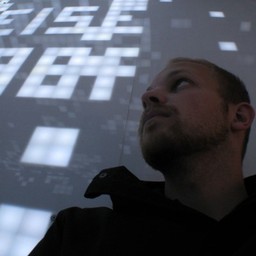-
- 25 Jun25 June Jia-Rey Chang lectures at Architecture Days Cluj-Napoca 2016 (Zilele Arhitecturii 2016). The lecture is entitled: "From interFACE to interACT"
- 23 Jun23 June - 1 July, Dr. Nimish Biloria presents Swarm Scapes and associated Swarm intelligence based research at the ICSI 2016
- 23 Jun23rd June, Henriette Bier lectures on D2RP processes and Kite-powered Robotic Building at the Rotterdam Academy of Architecture and Urban Design
- 21 JunProf. Kas Oosterhuis, Dr. Nimish Biloria and PhD candidate Sina Mostafavi lecture at KNAW-symposium "Next Generation Architecture"
- 20 Jun20-21 June Henriette Bier, Ana Anton and Serban Bodea participate in first workshop on Kite-powered Robotic Building Systems
- 20 Jun20 June Sina Mostafavi lectures at AA visiting school 2016 in Istanbul
- 07 Jun7-9 June Henriette Bier lectures and leads a seminar on Robotic Building as Design-to-Robotic-Production and Operation at Roma 3
- 06 Jun6 - 9 June, Dr. Nimish Biloria lectures and develops strategic research collaboration with Cardiff University, UK.
- 03 JunHyperbody showcases two interactive installations at IFoT 2016 Grand Finale
- 01 JunHenriette Bier presents Robotic Environments at ShellMech symposium
-
-

- Tomasz Jaskiewicz
Lasse Gerrits: Thinking in terms of complexity has the advantage of focusing on the time-dimension. 'Complexity' puts everything one observes into flux and that is really an added analytical value. But why would this be relevant to architecture? Isn't architecture static by definition?
The talk between Lasse and Tomasz is hosted on the Cityness blog. Source: interview part1 / part2
A while ago I blogged about an event where among others Tomasz Jaskiewicz of TU Delft / Hyberbody talked about complexity-informed architecture. I left with quite some questions and contacted Tomasz for more information. He was kind enough to get into detailed answers and accepted to have the discussion published on Cityness.
What are your most important cues from complexity?I understand that. I mean, once you get start seeing the world as temporal systems, it is pretty hard to return to statics. So, which authors in the realm of complexity do you consider important? I enjoyed the examples you showed during your presentation and I can follow the reasoning behind them, tracing it back to complexity thinking. However, I find it hard to transfer your examples to concrete building projects. How does complexity translate into buildings where people can live, work or recreate and that are compliant to building regulations, and can be build at realistic price levels?The Responsive CitySo do I. The proof of the pudding is in the eating, and that is especially true for complexity theorists. In my field, thinking in terms of complexity has received a lot of criticism. Some say it is a fad, full of fancy terms but with little added value. How is that in architecture?
 Facebook/
Facebook/
 Twitter/
Twitter/
 RSS
RSS

